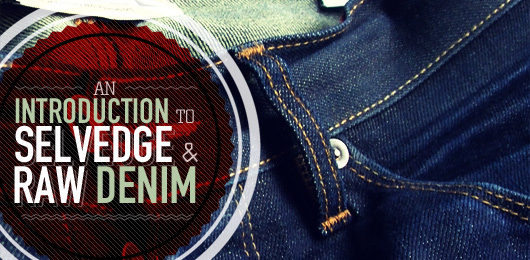|
This post is sponsored by Delta. To see why Economy Comfort is #worthit and to upgrade your seat visit delta.com/EconomyComfort
What is this? |
We all grew up hearing conflicting stories about the difference between luxury and off-brand items. Anecdotes like the idea that all potato chips are made in the same factory and the only difference between Frito and Kroger is the packaging they come in. Or other stories that off-brand meats are mixed with scraps of leather and only buying name-brand quality can ensure a man gets what he wants from a product.
There’s no definitive line that can be drawn saying that all luxury is the same product with better packaging, or that all generic items are inferior, dangerous products and should be avoided like the plague.
Instead, individual men need to adopt a mentality that’s old enough it’s become its own aphorism: Penny wise and dollar smart.
It’s easy for most men to see the importance of being penny wise. If I have $100 today and need a new pair of shoes, it’s in my best interest to buy a pair that costs less than $100. I’m not spending more than I have, and am saving my pennies.
However, that pair of shoes that cost me less than $100 will most likely only last me for a year or two. After that I’ll have to purchase another pair, and then another after that. Whereas, had I instead invested in a pair of shoes that cost closer to $300 (and ensured I was paying for a better shoe, not just a different name) then I would be able to wear that same pair for years.
So the cheap shoes over ten years end up costing me a total of $500, but the more expensive shoes only cost me $300 over the same period of time.
But even with that understanding in the back of his mind, there are a significant number of men who refuse to splurge on any item in their wardrobe or other aspect of their lives.
They claim they can’t afford it now, they need an option now, and there’s nothing else to be done about it. They convince themselves that they don’t really need the superior quality because they’re easier on their shoes/car/suits/furniture than most men and the extra quality isn’t a factor worth investing in. Some men will even avoid purchasing higher-end products out of a twisted sense of pride. Their ego is invested in their humility and they look down their noses at men who are “slaves to luxury.”
All of these may be valid reasons for avoiding particular purchases at particular times, but it is wise for a man to learn to control these impulses instead of being controlled by them. All of us will have the need for better quality throughout our lives. Once we recognize that and we learn what luxury items will improve our lives, we can start to make wiser purchases.
Knowing what a man needs in his life is obviously an individual undertaking and not something that can be summed up for all men on one website. But, what we can do is help illustrate what the major benefits are to investing in a higher-quality purchase.
Let’s use suits as an example:
What many men fail to realize is that the cloth used in suits across the world varies greatly. That “wool blend” item that comes from certain retailers when a man buys one suit and gets seven free can be 98% polyester and 2% wool. Technically it is a wool blend, but only technically. Polyester may be more durable but it doesn’t breath well, it’s not as comfortable, and it gets a terrible sheen in places that see too much use and abuse.
Wool is more expensive to use because it’s more difficult to access. Mills have a limited number of sheep on a limited number of farms. Whereas polyester can be created night and day with fewer limitations.
So, it may be cheaper, and the suit may even be more durable (arguably). But it won’t look as good and it won’t wear as comfortably – making it more of a pain to wear than a pleasure.
A cloth’s quality isn’t the only factor in its price. Another large aspect is its rarity. The difference between cashmere and wool is a great example. Wool comes from sheep all over the world. There are wools that come from nearly every continent. However, cashmere is the product of a specific breed of goat – the cashmere goat. On top of that, cashmere is not a wool, it’s a hair.
The amount of usable hair per goat is smaller, the amount of overall goats is smaller, and this is what makes cashmere more expensive. There is more time and effort required to obtain enough material to make a suit. It costs the farmers more, it costs the mills more, it costs the suit maker more, and it costs the consumer more.
Some men value rarity for rarity’s sake. It’s what makes gold valuable. Others value an item despite its rarity and are willing to pay more for the benefits regardless.
Continuing with our suit comparison, it’s not just the cloth that determines the cost of a suit, but the way in which a suit is made.
Entire books have been written about all of the different aspects of quality suit construction. Rather than going into overt detail, check out this great summation from NPR.
The last reason men are willing to pay more for luxury may be considered shallow or vapid, but it is a valid reason for some – name brand. Our lives are largely driven by our relationships with other people. Family, friends, co-workers, acquaintances, competition, they all impact us.
Some men see a name brand as a tool in their tool bag. Customers can be convinced of the quality of a restaurant by the top-shelf drinks they serve. Clients can be convinced of a consultant’s success by the car he drives and the watch he wears.
Our brains try to be as efficient as possible. As a result, we often will make shortcut value associations and name brands help us accomplish just that. This is an amoral aspect of our lives and is something that can be used to a man’s advantage if he chooses to do so.
While learning where to invest in quality is one aspect of being dollar smart, its counterpart is knowing what purchases are still worth making as cheaply as possible. This especially holds true for a man’s wardrobe as a well-dressed man should have an intentional balance between timeless style and fashion.
Trendy or attention-seeking items are better off picked up on the cheap. Stacked bracelets, bright chinos, a loud blazer, and other pieces that fall more towards fashion than style won’t see as much rotation in a man’s closet – making their durability and longevity less important. They also won’t see as permanent of a stay in a man’s wardrobe. I love a good pair of bright blue chinos as much as the next style blogger, but I’m under no delusion that I won’t feel the same way ten years from now.
On the other hand, timeless items like well-made dress shoes, suits, sweaters, and coats typically will be more traditional in their styling. These same items can also see much more daily use and abuse – meaning it’s a better financial decision long term to invest in the highest quality a man can in the beginning.
Items that take a beating, things like bags, jeans, leather jackets, and others are also going to be worth investing in. In the long run, it’s a much better value proposition to buy an item nice and buy it once, then it is to have to continue to make upgrading purchases.
See how Saddleback Leather doesn't cut corners.
Daily and simple things that see regular rotation are fine to save on. Underwear, T-shirts, socks, etc. are items that don’t see any major differences in either comfort or quality when the price goes beyond a certain point. A T-shirt from Target will fit just as well, feel just comfortable, and last as long as one from Prada.
The final piece to the puzzle of learning to invest in a quality wardrobe is knowing when to make those quality purchases. Just because a man wants to pay for quality items doesn’t mean he wants to pay more than he has to.
If a man is dead set on buying new items, his best option is to take advantage of sales. Those may be seasonal, related to holidays, or part of a promotion for a specific store. It doesn’t matter what the sale is, many of the best items still see severe mark-downs.
Another way to approach purchasing quality items is to continue the long-term mindset by buying out of season. Most retailers work with limited space and need to clear out items from each season to make room for what’s next. Buying a coat in the summer or swim trunks in the winter is a great way to capitalize on better prices for great items.
The only downside to this approach is that many items, such as suits and dress shoes, don’t change as much on a seasonal basis. That pair of of double monks wears just as well in the spring as it does in the fall, so waiting for it to be off season is a fruitless exercise.
The other route is to go after used purchases. Because quality items last so long and so well, it’s often easy to find them for very low prices and still in great quality. Options like eBay and thrift stores require a bit more digging, but when a good find is made, the cost per item is typically lower than through any other channel.
The key to all of this is for each man to take the time to make thought-out, deliberate decisions about what his best choices for long-term investments and the best ways to make those purchases. Each of us will have different needs, but each of us should buy the absolute best we can afford when the value is worth the price.
























